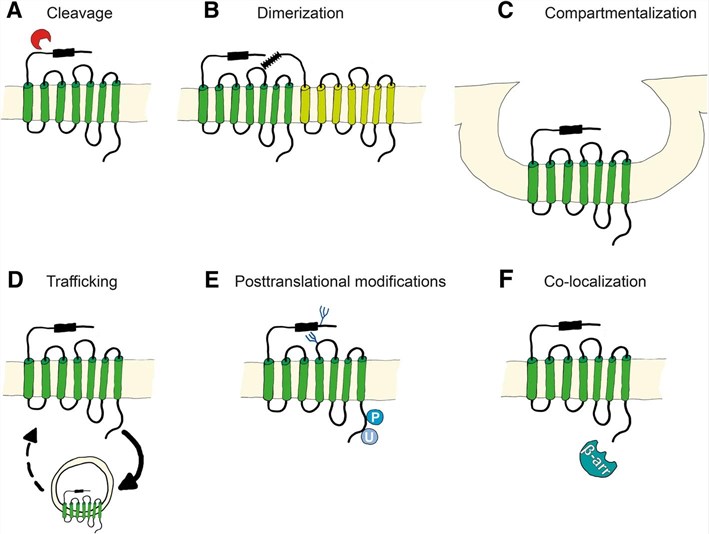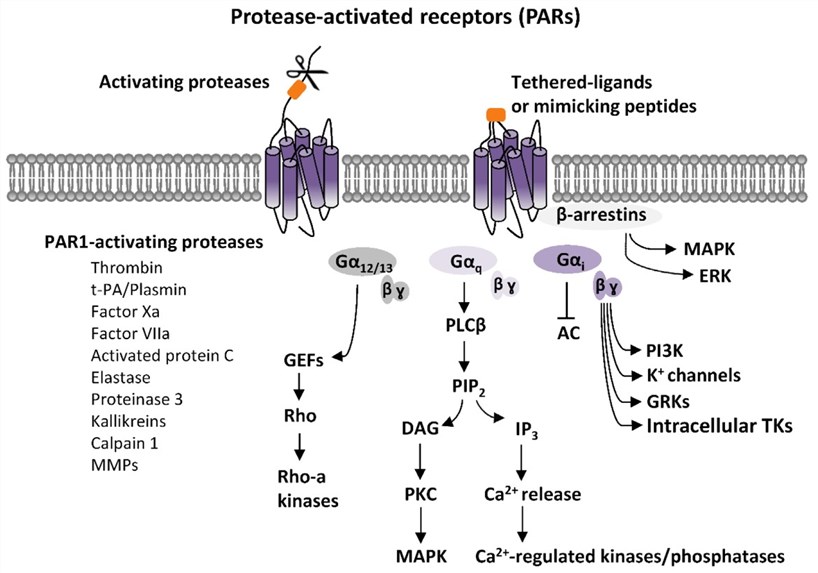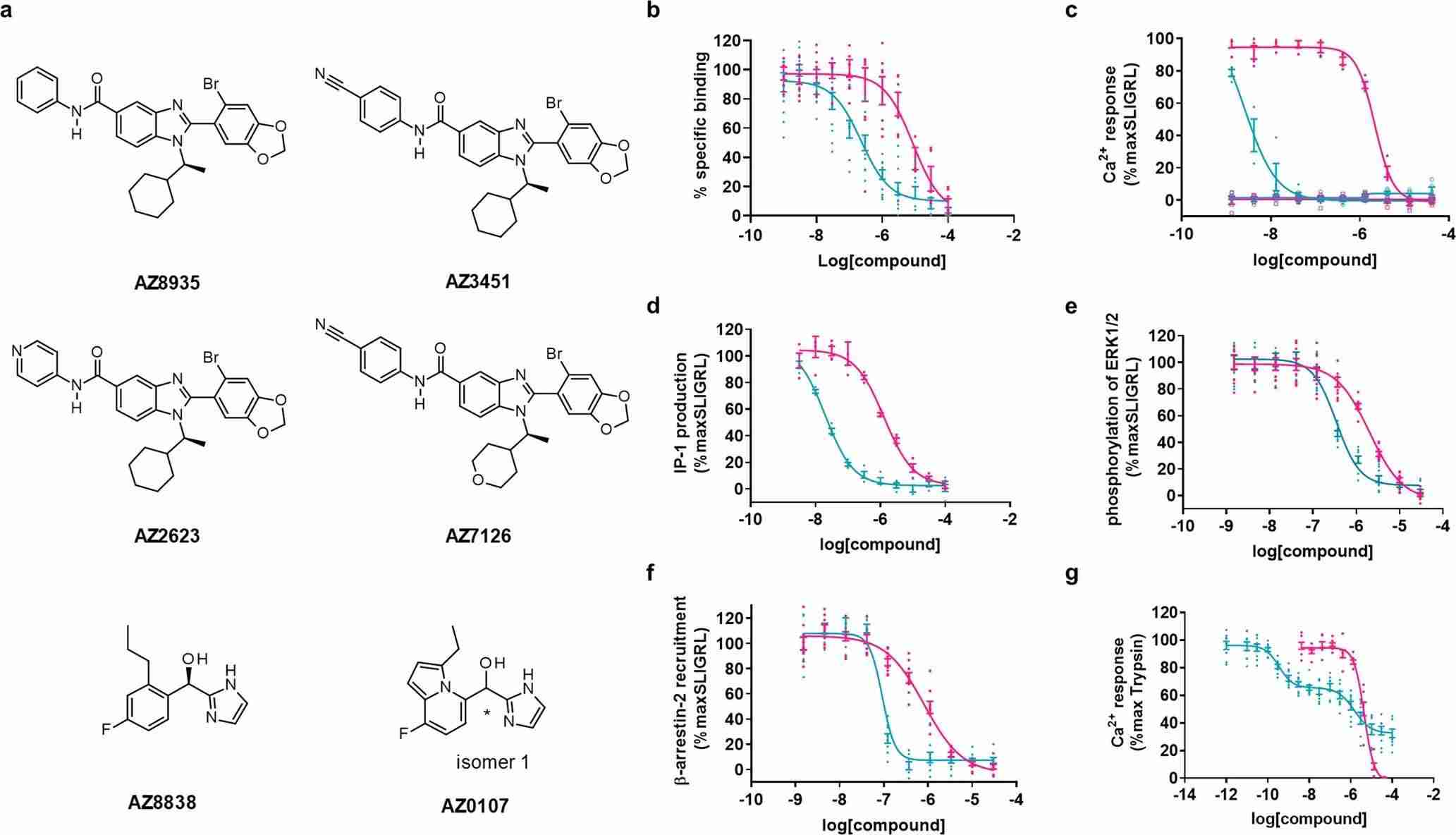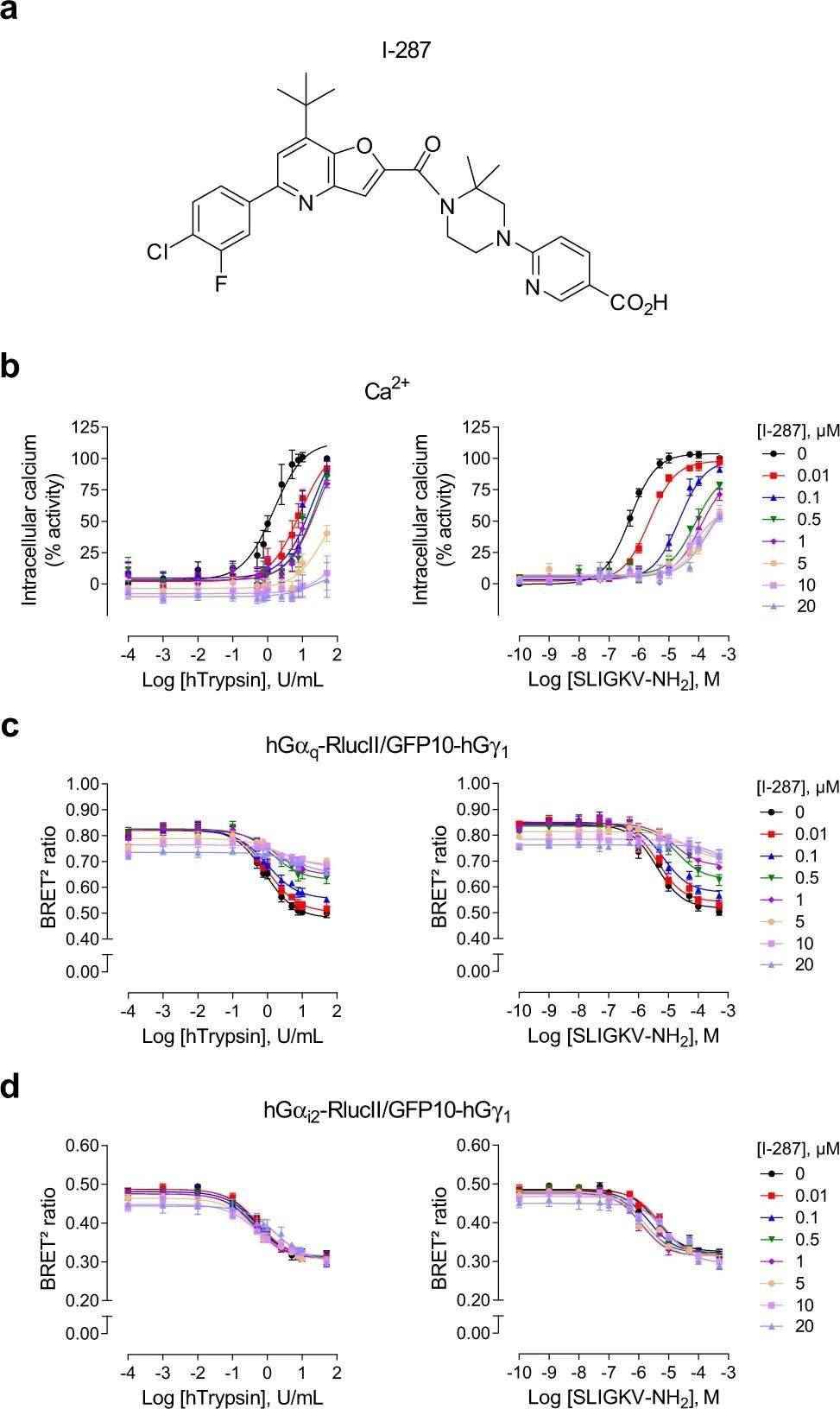Hi-Affi™ In Vitro Cell based Proteinase activated Receptor Functional Assay Service
The Importance of Proteinase-activated Receptors
Protease-activated receptor (PAR) is a 'disposable' subtype of GPCRs and contains four members: PAR1, PAR2, PAR3, and PAR4. Their expressions almost exist in all cells surface throughout the body. They play a crucial role in many physiological actions such as cell division and proliferation, inflammation, coagulopathy, and many more. Therefore, the occurrence of many diseases like cancer and pancreatitis, involves the participation of protease-activated receptors. To boost the development of disease therapy, there is an urgent need to deeply understand the function mechanism of proteinase-activated receptors.
 Fig.1 The activation mechanism of PAR.1
Fig.1 The activation mechanism of PAR.1
The Principle of Hi-Affi™ In Vitro Cell-Based Proteinase-activated Receptor Functional Assay Service
To assist the drug development of disease therapy, Creative Biolabs innovatively developed a Hi-Affi™ in vitro cell-based proteinase-activated receptor functional assay service and now provides this service for global customers.
Our Hi-Affi™ in vitro cell-based proteinase-activated receptor functional assay service incorporates the advantages of cell-based in vitro assay and breaks through the limitations of traditional proteinase-activated receptors functional assay. Based on the downstream reaction caused by the binding of protease-activated receptors to their ligands, we used the accumulation of second messengers as the measurement indicator in this assay. This assay supports a thorough analysis of the candidate samples' abilities to operate as or regulate proteinase-activated receptors. Together with our professional research team and one-stop services, we are confident in presenting desirable and high-quality outcomes for every customer during a short period.
 Fig.2 Protease-activated receptors (PARs) signaling.2
Fig.2 Protease-activated receptors (PARs) signaling.2
Our Advantages
- Cell Lines: numerous categories; continued steadiness; identified.
- Experiment System: equipped with advancing instruments and technologies; rapid turnover; powerfully efficient.
- Research Team: competent and seasoned; extensive experience working on similar projects.
- Service: one-stop customized services; top-ranking; comprehensive.
Representative Data
Representative data 1: Although PAR2 has been linked to several pathophysiologies, its complicated activation mechanism and limited small molecule tractability make it a difficult target for drug development. This study pharmacologically profiled two novel PAR2 antagonists with different modes of inhibition, in addition to a powerful new agonist based on the probable orthosteric site. These findings show two separate modes of inhibition that might be used in the development of PAR2-modulating medicines in the future.
 Fig.3 Analysis of PAR2 antagonists' pharmacological profiles.3
Fig.3 Analysis of PAR2 antagonists' pharmacological profiles.3
Representative data 2: The PAR2 has a role in both inflammatory and painful responses. There is still much to learn about the signaling pathways they trigger, especially how they contribute to inflammatory reactions. The study investigated a novel selective and powerful PAR2 inhibitor, which exhibits functional selectivity by acting as a negative allosteric regulator of Gq and G12/13 activity and their downstream effectors, without affecting Gi/o signaling. These findings not only elucidate the roles of PAR2 signaling pathways in the pro-inflammatory response but also pave the way for the creation of more selective medications that block just certain signaling activities at the receptor, thereby reducing the potential risks associated with their use.
 Fig.4 Identification of I-287 as an allosteric negative modulator of PAR2.4
Fig.4 Identification of I-287 as an allosteric negative modulator of PAR2.4
Work with Creative Biolabs
Creative Biolabs is significantly improving technology and services in response to important input from customers across the world and to contribute to the growth of the industry. All the time, we are committed to providing every customer with the best possible results by providing individualized, comprehensive service.
Feel free to get in touch with us at any time if you have any questions concerning our Hi-Affi™ in vitro cell-based proteinase-activated receptor functional assay service. We eagerly await your questions and anticipate to work with you.
References
-
Heuberger, Dorothea M, and Reto A Schuepbach. "Protease-activated receptors (PARs): mechanisms of action and potential therapeutic modulators in PAR-driven inflammatory diseases." Thrombosis Journal 17,4 (2019): 8.
Distributed under Open Access License CC BY 4.0, without modification. -
Price, Rachel, Nicola Biagio Mercuri, and Ada Ledonne. "Emerging roles of Protease-Activated Receptors (PARs) in the modulation of synaptic transmission and plasticity." International journal of molecular sciences 22.2 (2021): 869.
Distributed under Open Access License CC BY 4.0, without modification. -
Kennedy, Amanda J et al. "Protease-activated receptor-2 ligands reveal orthosteric and allosteric mechanisms of receptor inhibition." Communications Biology 3,1 (2020): 782.
Distributed under Open Access License CC BY 4.0, without modification. -
Avet, Charlotte, et al. "The PAR2 inhibitor I-287 selectively targets Gαq and Gα12/13 signaling and has anti-inflammatory effects." Communications Biology 3,1 (2020): 719.
Distributed under Open Access License CC BY 4.0, without modification.
For Research Use Only.
